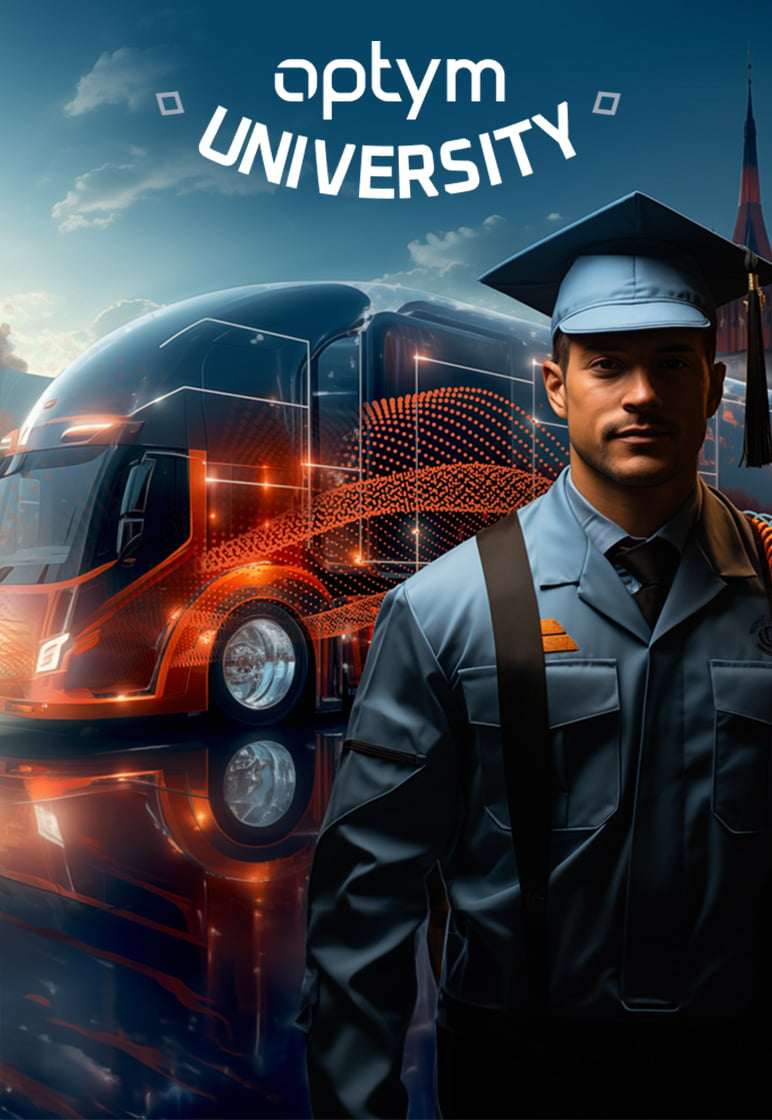
School is in session
Optym University provides an educational overview of optimization, network planning, and artificial intelligence with a focus on how these concepts can improve transportation and logistics.
About this episode:
Explore the dynamic journey from academic theory to real-world application with our latest video on optimality vs. operability.
Join us as we delve into the world of transportation network optimization and discover how Optym's expertise transforms complex challenges into operable solutions.
Video transcript:
Imagine a world where the most efficient route isn't just a theory but a reality for every truck on the road. Couple academic brilliance with practical application, and the complex transportation challenges of today can transform into operable solutions.
With 40+ years spread across academia and developing operable algorithms for real-world transportation network optimization problems and creating business value for clients, Ravi Ahuja, the founder of Optym gained valuable insights into the nuanced distinction between optimality and operability and why it’s an important difference he’s put into practice at Optym.
The journey from academic theory to real-world application is marked by a shift from seeking perfect, theoretical solutions to developing practical, operable strategies. This is especially evident in the transportation industry, where theoretical models meet the unpredictability of the real world. Follow along as we review five ways optimality shifts to operability.
“In Academia, we explore possibilities, in transportation, we navigate certainties.” In academia, solutions often come in the form of probabilistic models, offering a range of potential outcomes that are valuable for exploring theoretical possibilities. However, in the real world of transportation, companies need definitive and practical solutions. These industries require precise routes and schedules, where the clarity and certainty of deterministic models are far more applicable and actionable than the probabilistic predictions of academic research.
“The real world is messy and complex” While academic models often simplify variables, real-world routing must consider a multitude of factors: traffic, weather, vehicle conditions, and driver hours. Balancing these elements is key to creating value in the transportation sector.
“Efficiency in delivery matters, not just in transportation” In trucking, time is a critical resource. Unlike academic models that can afford the luxury of extended computation time, real-world routing solutions must deliver efficient and timely results, balancing speed with accuracy.
“Business first. Theory second.” While academia often develops solutions from a clean slate, practical applications require incremental improvements to existing systems, ensuring minimal disruption and maximized efficiency in ongoing operations.
“Optimization is a journey, not a destination” In practical applications, solutions are constantly adapted and refined based on real-world feedback and changing conditions academic models remain static.
By bridging the gap between academic optimality and operational reality, we can revolutionize the transportation industry. This approach doesn't just solve theoretical problems; it creates real-world efficiencies, proving that the most impactful solutions are those that can be implemented and adapted in the dynamic world of transportation.